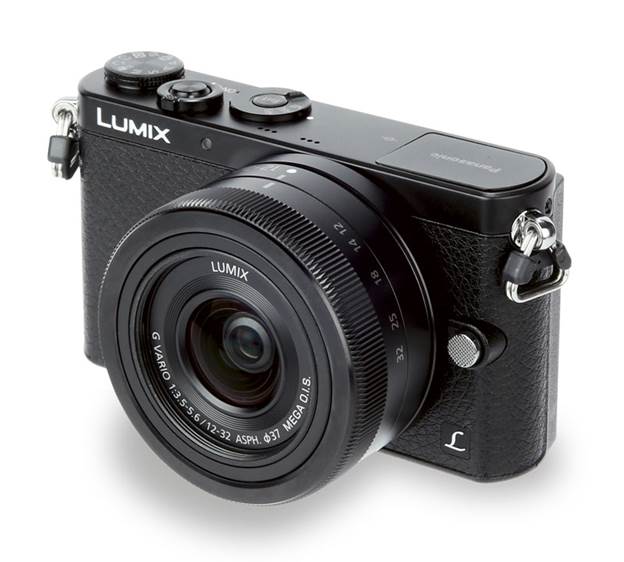Talk about miniaturization! The Panasonic Lumix DMC-GM1, which may be launched soon in India, is the
smallest interchangeable lens mirror-less compact camera that we have ever
reviewed! The body is smaller than the palm of an average adult man. Though
there could be some compromises in functionality due to the small size, the GM1
will satisfy most users. The camera will be available in black-silver grey and
fawn-silver grey combinations.

The Panasonic Lumix DMC-GM1 is the smallest interchangeable lens digital camera
you can buy.
Design and Build Quality
A mere 274g with lens, battery and memory card, the GM1 is
not only the smallest, but also the lightest mirror- less Micro Four Thirds
camera to date. The build quality is good; the body is made with tough magnesium
alloy and aluminium. The tripod receptacle is made of metal and is placed in
line with the central axis of the lens. A built-in flash stays flush with the
top plate till you pop it up using a slider switch next to it. There is no
provision to attach an accessory flash. The zoom ring on the 12-32mm kit lens
needs to be rotated clockwise to extend the lens. The lens, which has an aperture range from f/3.5 (W) / f/5.6 (T) – f/22, has 8
elements in 7 groups that include 3 aspherical and 1
ED lens element.

Panasonic and French ”brick-and-click”
retailer colette
have partnered to create a special edition Lumix GM1.
Key Features
The Panasonic DMC-GM1 is a 16-megapixel, interchangeable
lens, mirror-less, Micro Four Thirds System camera utilizing a Live Mos 17.3 x 13mm imaging sensor. The GM1 includes a
specially designed Lumix 12- 32mm f/3.5-5.6 G Vario zoom lens with Mega Optical Image Stabilizer (Mega
OIS) built- in. The lens has 37mm filter thread. The crop-factor for Micro Four
Thirds being 2x, the equivalent focal length in 35mm parlance is 24-64mm, which
is ideal for landscapes, interiors, other cramped
locations and for full-length figure studies. The lens is marked at 12, 14, 18,
25 and 32mm settings.
The top plate offers a Mode Dial, ‘On/Off’ switch
surrounding the shutter release button, and a Focus Mode Dial that includes Fn 1 – a Function Button. (There are 6 Function Buttons on
the GM1 but only one is physical, the rest are on-screen touch
buttons). At the left is the pop-up flash which can be popped-up using a small
sliding switch. You’ll also see two sets of three small holes – under which are
the stereo microphones. The GM1 offers Wi-Fi connectivity but does not offer
NFC (Near Field Communication), which Panasonic’s own GX7 offers.

Sample image taken with
a Panasonic Lumix GM1 fitted with the 12-32mm kit
lens.
The GM1 offers a maximum resolution of 4592 x 3448 pixels
at 4:3 aspect ratio. The other aspect ratios available
are 3:2, 16:9 and 1:1. Pictures can be shot in Raw, Raw+JPEG
Fine, Raw+JPEG Standard, JPEG Fine, and JPEG
Standard. Pictures can also be shot in 3D if you use a 3D lens (requires a TV
with 3D capability to view the 3D images). Focusing can be done manually or
using autofocus (Face- detection, AF tracking, 23-area focusing, 1-area
focusing and Pinpoint selection using the 3”
touch-screen). The touch-screen LCD, by the way, is fixed and offers a
resolution of 1040k dots. To facilitate focusing, Focus Peaking is on offer,
which shows a coloured outline surrounding the
subject in focus. The user can opt for blue, green or yellow colouring and the colour
saturation can be set to Low or High.